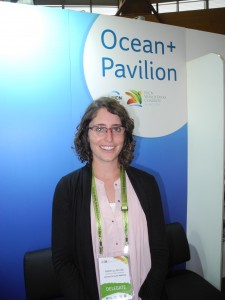So now that the world parks congress has ended, we can see how beneficial it is to get representatives from all over the world concerned about areas that are protected and areas that should be protected through communicating and sharing ideas. I can only imagine how inspiring it was for those attending a congress like this for the first time!
However, since I was not able to attend in person, I did my best to follow the various news feeds; facebook, youtube, and some blogs (I’m inept at twitter). Intense navigation of the World Parks Congress website had to be done to try and find discussions and upcoming talks. In the end I felt there was a dearth of knowledge on how new agreements are determined, or how much influence and participation attendees (that are not world leaders or experts) have on outcomes of panels. In addition of the difficulties of figuring out what was going on through the social media, I noticed not many people were following the social outlets. With just under 13,000 facebook “likes” and 2,600 youtube hits to their WPC promotional video (that had been out for a YEAR!) I can’t help wonder how it came about that there was a lack of expanding and promoting the WPC to be inclusive to a larger audience. With world renowned speakers such as Sally Jewel, the Secretary to the Interior, and Sylvia Earle, an oceanographer and huge marine conservation advocate, it seems only to appeal and gain attention to those who know and are interested in their fields. I couldn’t help but think what better way to promote such an event that only occurs once every ten years by getting supporting players such as celebrities involved… without turning it into a “red carpet” event. Some celebrities are very passionate about the same issues as WPC attendees. Their name can assist increasing awareness to the event itself. If achieving more recognition of the congress led to quicker global acceptance, participation and results, is it not worth it? “It’s not what you know, it’s who you know”…has been quoted primarily for the job market, but could it not be applied to getting associations made about the worlds issues too? I’m sure there are many individuals out there who identify much quicker to a actor/actress than a world leader, scientific expert or top business person.
In a world of immediate correspondence and communication abilities, I was incredibly surprised to discover only through my graduate class that the World Parks Congress was occurring. How is it that an entire country like the US, knows when the third movie of the Hunger Games is coming to theater, but we don’t know about an international meeting on the worlds’ protected areas for the betterment of people and the environment? Are people as a whole genuinely disinterested in these issues? Do they feel that it is beyond the scope of what they think they are capable of making a difference or are they just in denial? As a conservationist, I hope it is the second, and expect to see adjustments to get those currently disengaged to an engaged level. This will lead to a new wave of creative and positive conservation actions in the upcoming years!



